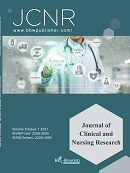Abstract
Objective: To explore the clinical methods and clinical effects of applying magnetic resonance imaging (MRI) and 64-slice spiral computed tomography (CT) in the diagnosis of patients with ischemic heart disease. Methods: 100 patients with ischemic heart disease were selected as the research objects. Selecting the patients from May 2020 to May 2021 as a sample, the patients were divided into two groups, and different diagnostic methods were used to compare the clinical diagnosis effects. Results: In terms of the diagnostic accuracy of the two groups of patients, the maximum value was 92.00% (experimental group) and the minimum value was 80.00% (control group). There was a big difference in data between the two groups, P<0.05, which was statistically significant. The patient’s (experimental group) diagnosis accuracy rate is higher. Conclusion: In the process of research work for patients with ischemic heart disease, it is particularly important to diagnose the patients. The combined application of and 64-slice spiral CT can improve the clinical diagnosis efficiency and achieve significant results.
